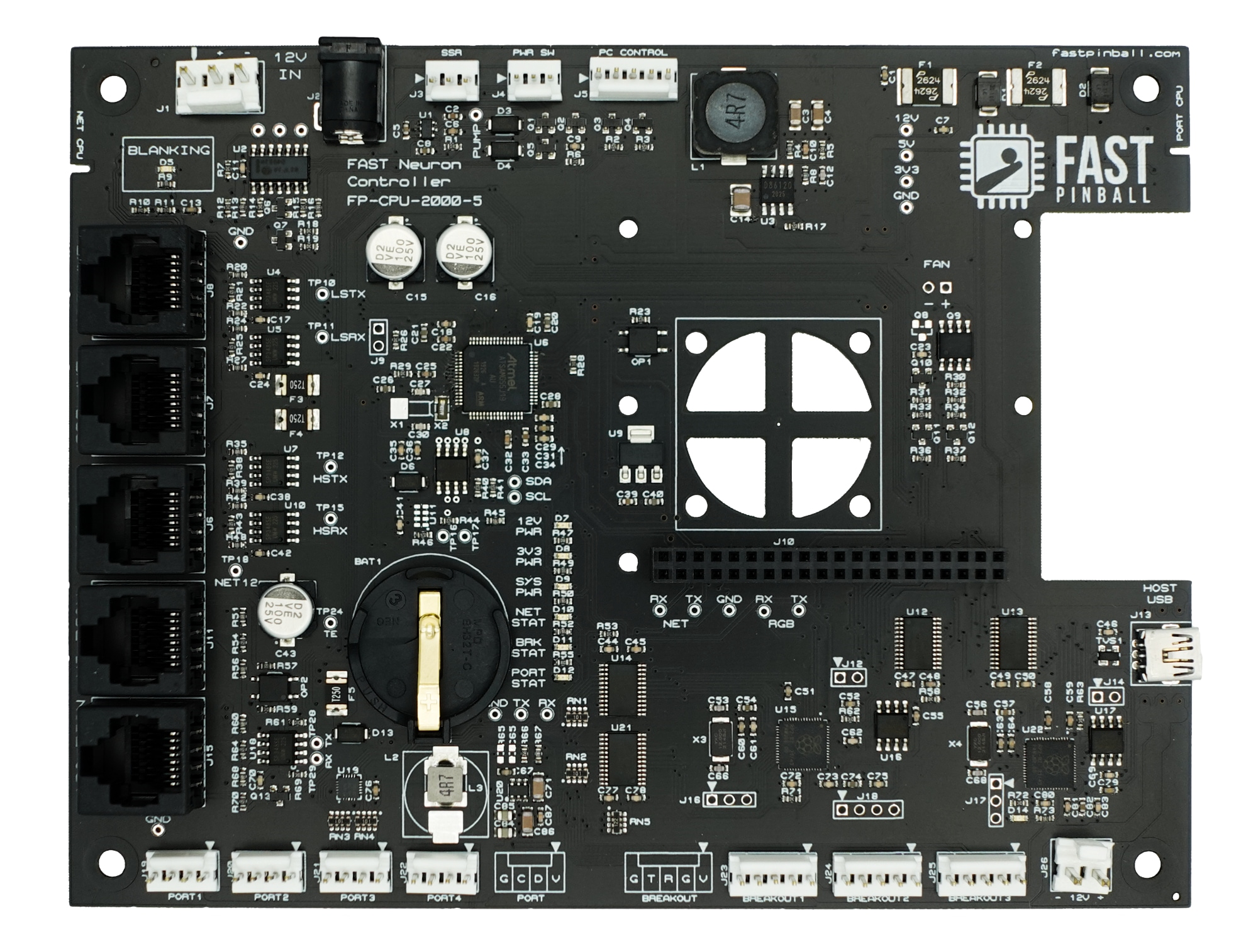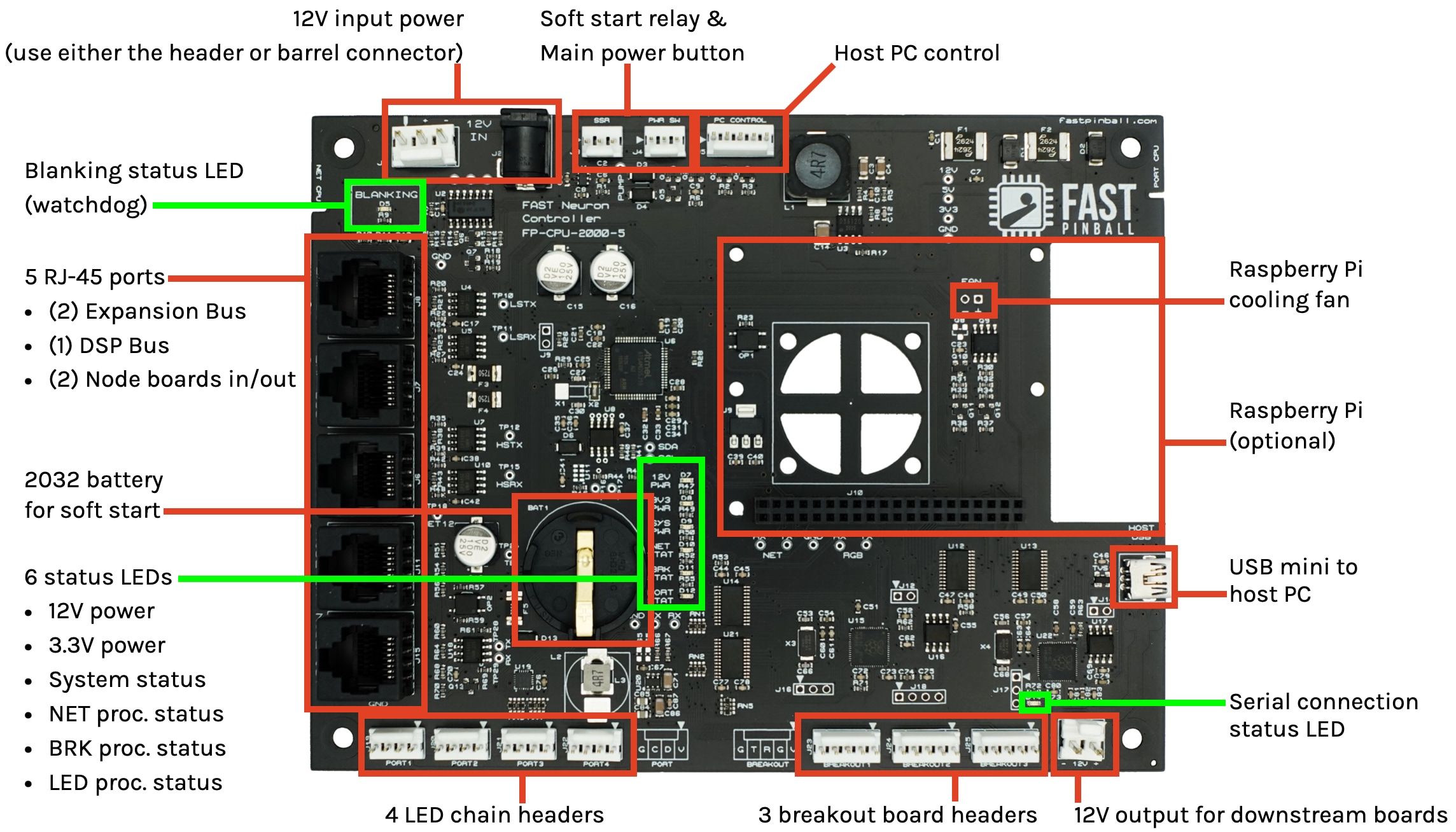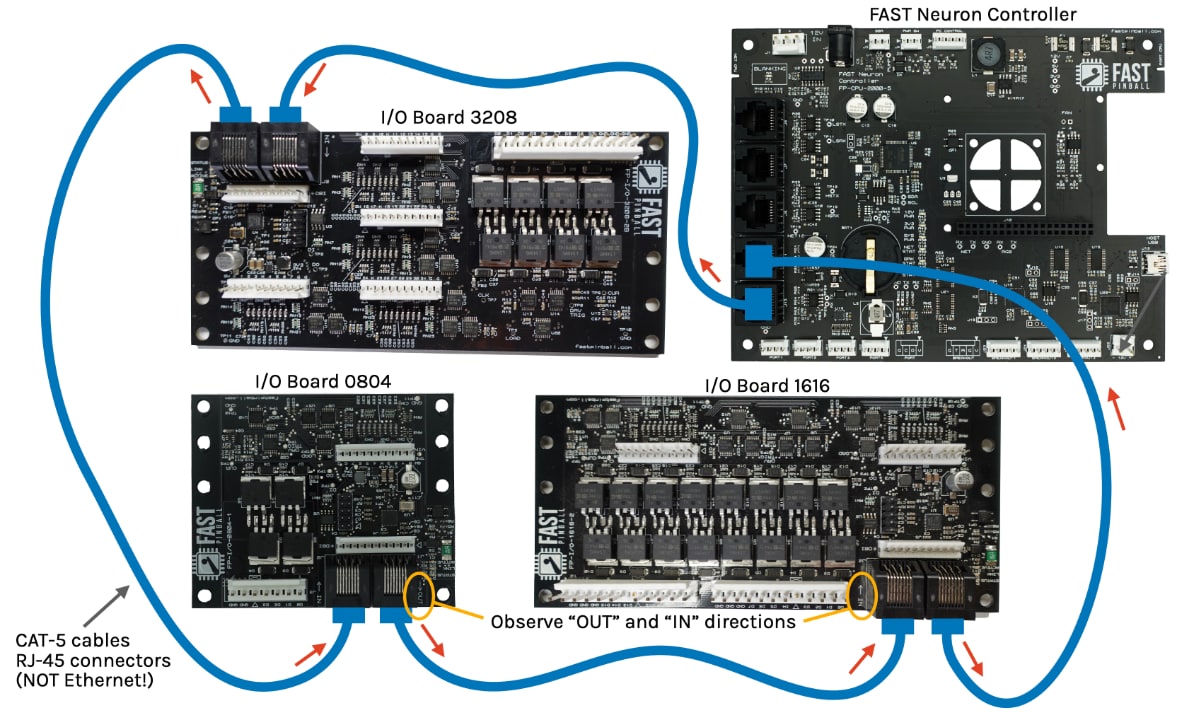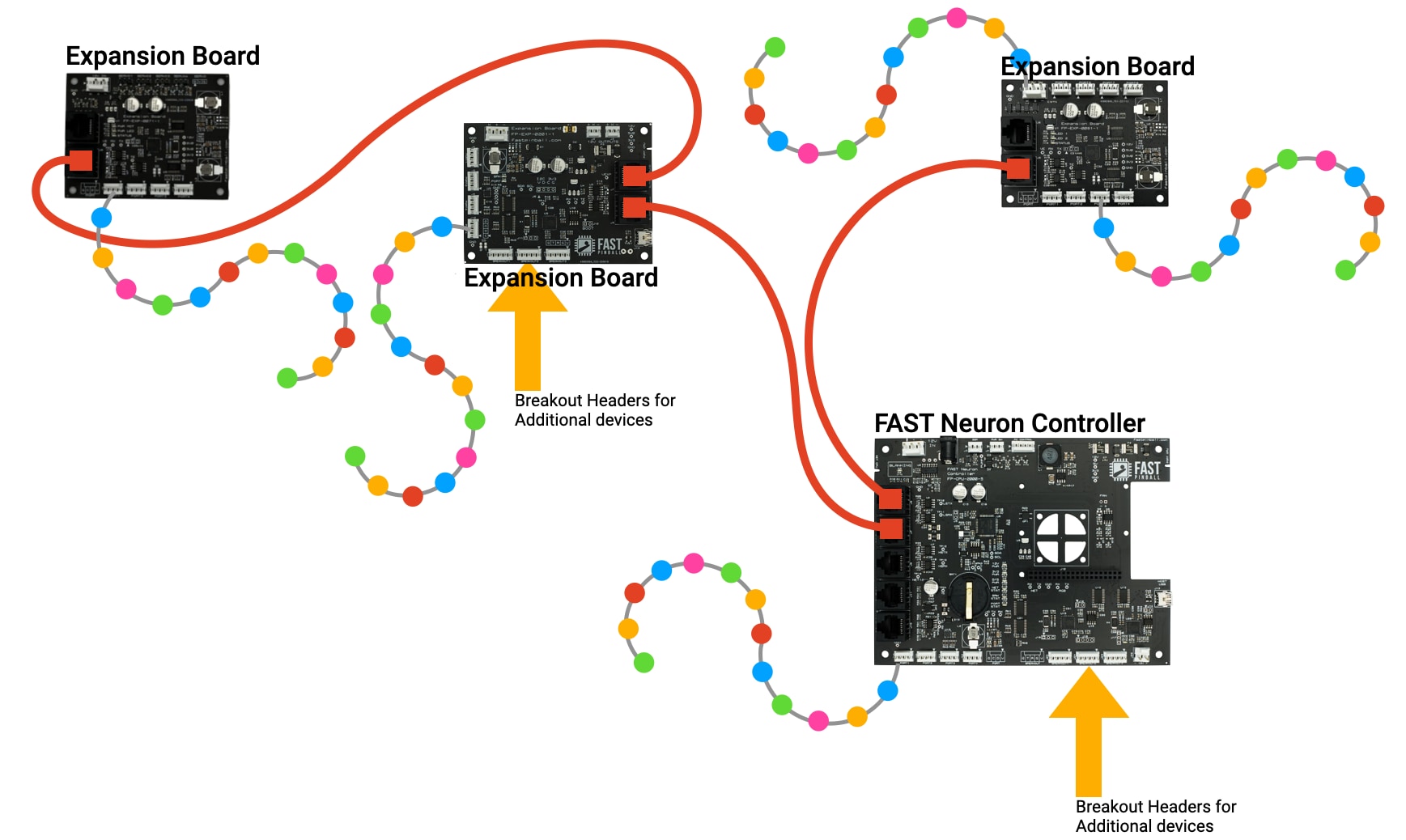FAST Neuron Controller¶
Part Number: FP-CPU-2000

The FAST Pinball Neuron Controller is the central hub of your pinball machine built on the FAST Pinball Modern Platform. It connects your machine's I/O boards via the FAST I/O Loop, adds virtually limitless control and lighting options via the FAST Expansion Bus, and even drives modernized classic pinball displays (such as RGB DMDs and RGB 7-segment displays) via the FAST Display Bus. Designed to be mounted in your machine's backbox, the Neuron Controller has built-in support to drive up to 128 RGB backbox LEDs as well as 3 breakout headers to add additional backbox functionality such as servos, steppers, flashers, motors, etc.
The FAST Neuron Controller, and the entire FAST Pinball Modern Platform, are designed to operate in machines with only 48-volt and 12-volt power supplies, thus simplifying and reducing the cost and complexity of your machine wiring. (Other voltages, such as 5 volts to power the LEDs, are generated locally on the boards where they're needed.)
The Neuron controller supports soft PC power control which handles soft power on and shutdown communication with the host computer. It also supports "soft power control" for the machine, which allows you to wire a "soft" low voltage pushbutton power switch in the traditional right-front cabinet location without needing any line-voltage AC power in your cabinet.
If you're running your machine's game code from a Raspberry Pi, you can seat the Pi directly into the Neuron Controller. The Neuron will provide power, soft fan control, and soft power on / shutdown for the Pi, simplifying wiring, installation, and reducing external components needed for proper Raspberry Pi operation.
Features At-a-Glance¶
- Acts as the interface between the FAST system and the host computer running the pinball game software.
- Uses the FAST I/O Loop with FAST I/O boards to power solenoids and read switches
- Supports up to 120 switches and 120 drivers
- Built in expansion board provides 4 LED ports (10W sustained power total) and 3 breakout headers
- Uses the FAST Expansion Bus expansion boards for RGB LEDs, servos, steppers, motors, drivers, custom mods, toppers, cabinet controllers, etc.
- Leverages the FAST Display Bus for modernized classic pinball displays such as RGB DMDs and RGB 7-segment displays.
- Smart Power Control provides machine-wide integrated power management, including voltage and current monitoring, bad fuse detection, machine-wide soft power option, host PC and LCD power management.*
- Raspberry Pi header allows a Pi acting as the host PC to be mounting there. Includes integrated power and fan management.
* Note: The soft power on / soft power off feature is not yet complete and will be enabled in a future firmware update.
Differences from the Nano Controller¶
The FAST Neuron Controller was released in 2022 and replaced the FAST Nano Controller in use since 2016. If you're interested in a specific list of what's new and different when compared to the Nano, check out this December 2022 blog post: A guide to the Neuron controller for current FAST Pinball makers.
Quick tour of the Neuron Controller¶
Here's an overview of all the ports and headers on the Neuron.

See the links in the Next Steps section of this page for details on what all of these things actually do.
The FAST I/O Loop¶
In a FAST Neuron-controlled pinball machine, I/O Boards (sometimes called "node boards") are connected to the Neuron via the FAST I/O Loop, a continuous loop of Cat-5 cables which interact with drivers and switches connected to the I/O Boards.

The FAST Expansion Bus¶
The FAST Pinball Expansion Bus is a new & modern platform for building interactive mods and adding capabilities to pinball machines. The Neuron controller has two FAST Expansion Bus ports. Most likely you'll use an expansion board under the playfield for playfield lighting, servos, steppers, and other playfield devices. (Basically everything except for switches and drivers which are handled by the FAST I/O Loop.) You might also use an expansion board in a topper, and maybe another if you do some kind of cool under cabinet lighting. (So think about expansion boards adding "local" interactivity to various points of your machine.)
Individual expansion boards are connected to the FAST Platform Controller via RJ-45 cables. Many boards have multiple ports to allow for daisy chaining and "fanning out" topologies. (The Expansion Bus is NOT a loop network, so the cables do not need to be connected in a loop.)
Expansions boards have various features and capabilities built-in, but they can also be extended via breakout boards which plug into breakout headers. Breakout boards add additional functionality to the expansion board, such as additional LEDs, flashers, servos, steppers, other drivers, etc.
Here's a conceptual diagram of the FAST Expansion Bus:

Connectors Housings Needed¶
| Qty | Pins | Size | Description |
|---|---|---|---|
| 1 | 3-pin | 0.156" | 12V power in |
| 1 | 2-pin | 0.156" | 12V power out |
| 4 | 5-pin | 0.100" | Host PC Control, Breakouts |
| 4 | 4-pin | 0.100" | LEDs |
| 2 | 3-pin | 0.100" | SSR, power switch |
Mechanical Diagram¶
All dimensions are in mm.

Firmware Updates¶
The firmware for this board can be updated. See the Firmware Updates page for instructions and the latest versions.
Wiring Guides & Documentation¶
- Neuron Unboxing & First Steps
- Mission Pinball Framework configuration for Neuron
- Neuron Step-by-step wiring guide
N or > jump the next page, P or < for previous, search with S or ?